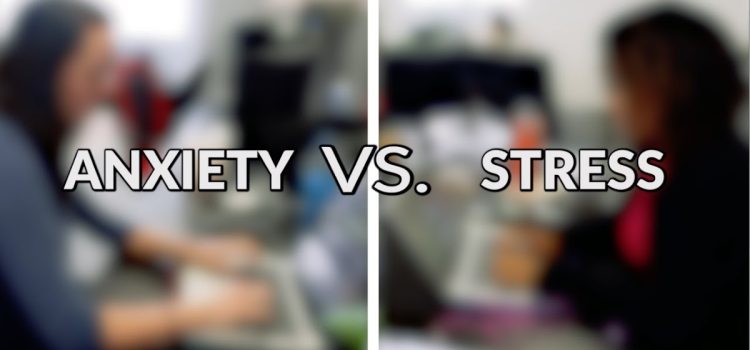
Introduction
In the intricate tapestry of human emotions, stress and anxiety stand as pervasive threads, often interwoven and challenging to disentangle. While sharing similarities, they possess distinct characteristics in terms of their origin, symptoms, and temporal nature. This comprehensive exploration seeks to shed light on the nuanced differences, shared symptoms, methods of identification, and multifaceted treatment approaches for these common human experiences.
Understanding the Nuances: Differences Between Stress and Anxiety
The Intricate Dance of the Body’s Response
Embedded within the body’s intricate systems, stress and anxiety find their roots in the primal fight or flight response. Stress, akin to a fleeting visitor, emerges in response to a recognizable threat. On the other hand, anxiety, a more enduring companion, lacks a discernible trigger, lingering as an ever-present undercurrent.

Symptoms: A Shared Landscape
The Overlapping Symphony
Stress and anxiety compose a symphony of shared symptoms, where a heightened heartbeat, accelerated breathing, and an unsettling sense of unease become the familiar notes. Mood swings, irritability, and the overwhelming feeling of being submerged under life’s challenges further contribute to this shared landscape.
Deciphering the Enigma: How to Tell Stress from Anxiety
Peering Into the Abyss
Discerning between stress and anxiety proves to be a challenge, as their manifestations intertwine. Stress, often a transient response to a recognized threat, contrasts with anxiety, an enigmatic state seemingly devoid of a distinct trigger.
Treatment and Management: Nurturing Mental Resilience
Crafting an Arsenal of Coping Strategies
- Relaxation Techniques:
- Delving into breathing exercises
- Imbibing the serenity of soothing words or visualizing tranquil scenes
- Embracing the mindful practices of yoga and tai chi
- Physical Activity:
- Harnessing the therapeutic benefits of exercise, whether through a brisk walk, cycling, or running
- Embracing the fluid movements of yoga, contributing to a profound sense of calmness
- Communication:
- Establishing channels for expressing worries through open conversations with trusted individuals
- Seeking support from friends, family, or co-workers to foster a sense of communal resilience

The Transformative Journey: Can Stress Evolve Into Anxiety?
A Dynamic Evolution
Stress, as the body’s initial response to a threat, can undergo a metamorphosis into anxiety over time. The transition signifies a profound shift from the acute to the chronic, marking an evolution in the complex interplay between mind and body.
Nurturing Mental Well-being: When to Seek Professional Guidance
Deciphering Warning Signs
While stress and anxiety are inherent to the human experience, prolonged symptoms may herald the need for professional intervention. Warning signs encompass excessive anxiety, substance misuse, irrational fears, significant alterations in habits, protracted low mood, self-harming thoughts, or a sense of spiraling out of control.

Summary
In summation, stress and anxiety are integral components of the human experience, orchestrating the dance of the body’s response to threats. Stress, a transient visitor, contrasts with anxiety, the more enduring companion. Effective management involves a diverse array of strategies encompassing relaxation techniques, physical activity, and open communication. Should stress or anxiety significantly encroach upon daily life, seeking medical counsel becomes paramount for a thorough evaluation and tailored support. In understanding this intricate symphony, we pave the way for a more resilient and harmonious mental landscape.










